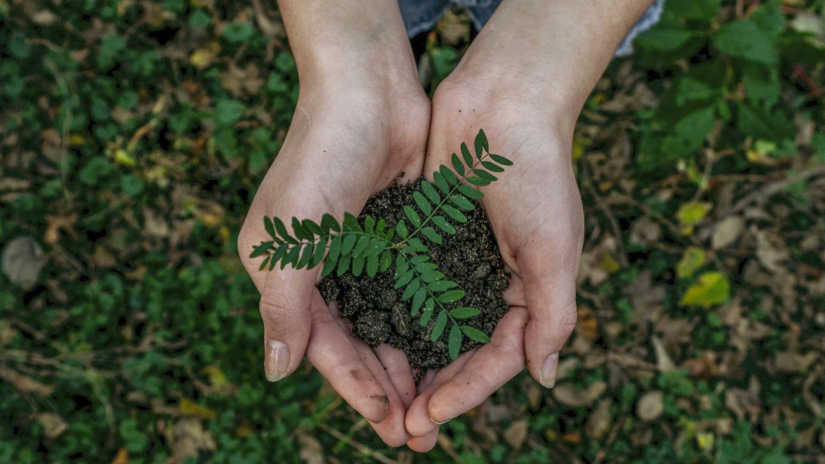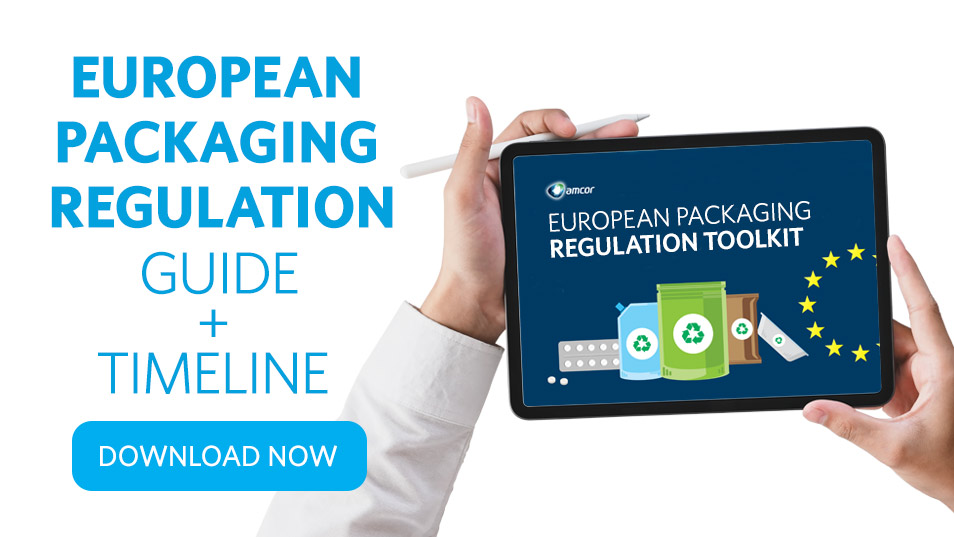More sustainable packaging: 5 common questions
Sustainability
December 5, 2024Reading time: 6 minutes
Bust common sustainability myths, with the five most common questions our packaging sustainability experts hear. Gerald Rebitzer, Sustainability Director, shares his answers.
Bust common sustainability myths, with the five most common questions our packaging sustainability experts hear. Gerald Rebitzer, Sustainability Director, shares his answers.

As brands strive to make responsible packaging decisions to meet consumer expectations and legislative changes, they need the right sustainability information to ensure long-term success. No more myths, and no more buzzwords. Here are the top five most frequently asked questions, and my answers.
1. When is flexible packaging considered recyclable?
While recycling streams across different markets are complex, there are general criteria – divided into preferable and minimum – for recyclability. Common criteria emerge as outlined in the following table. These criteria are based on work by CEFLEX, in cooperation with the Ellen MacArthur Foundation, as well as on recommendations from national recycling systems.
More detail on requirements for recyclablity can be downloaded in the CEFLEX Design for a Circular Econonomy Guidelines, which were published in 2020.
• >80% fibers content
• >50% fibers content
• Density <1 g/cm3
• No PVC, Pvdc, fibres, aluminum foil, PET, biodegradable polymers
• Other polymers or barriers <5% each (e.g. EVOH, PA, SiOx)
(mix of PP and PE)
• Density <1 g/cm3
• No PVC, Pvdc, fibres, aluminum foil, PET, biodegradable polymers
• Other polymers or barriers <10% each (e.g. EVOH, PA, SiOx)
Learning from the history of soft drinks bottles, and their transition from mixed materials to Polyethylene Terephthalate (PET) in the 1970s, Amcor’s R&D focus is to move toward recycle-ready flexible packaging, as outlined in the table above, as much as possible.
Historically, flexible plastic packaging has been made up of a mix of different materials (including PET, PP, PE, aluminium, and paper). Several years ago, Amcor achieved an innovative breakthrough: we developed a mono-PP film that provides high-barrier protection and recyclability as an alternative to non-recyclable multi-material pouches. With this development, flexible packaging moved a step closer to mass recycling
Today, 94% of our flexible packaging portfolio is designed to be recycled, with work in progress to transition our full portfolio by 2025.
2. Can bio-based PE be recycled like normal PE? Does bio-based mean it’s biodegradable?
Bio-based PE can be recycled in the PE recycling stream as it is exactly the same in terms of chemical composition. However, bio-based PE is not biodegradable. It’s important to note the distinction between “bio-based” and “biodegradable” as these are often confused.
Bio-based plastics are (wholly or partly) derived from renewable resources (vs. fossil based). These renewable resources can include corn, potatoes, rice, soy, sugarcane, wheat, and vegetable oil. Bio-based PE on the market today is mainly based on sugarcane as the renewable carbon source.
The major advantages of bio-based PE include:
- Significant reduction in carbon footprint compared to fossil-based PE
- Increased value of agricultural by-products, which can help farmers and rural economies
Bio-based does not necessarily imply biodegradability. Biodegradation is a microbiological process that breaks down materials into natural substances such as water and carbon dioxide. The process of biodegradation doesn’t necessarily depend on the source of a material; therefore, some bio-based plastics as well as fossil-based plastics can be biodegradable, and some not.
Compostable packaging uses biodegradable materials that biodegrade in a given time frame (usually three to six months) under defined controlled conditions (temperature, humidity, etc.) either in an industrial composting facility or in a well-managed home compost installation.
3. When does the use of compostable packaging materials make sense?
“Compostable” is a term that risks being a buzzword, because composting requires specific collection and conditions to be composted, otherwise it is simply waste. Compostable packaging solutions are best suited for use in targeted applications where the packaging is unlikely to be recycled and at the same time facilitates composting of food waste/organic material and increases the actual composting rate of these organics. This includes, for example, tea bags, bags for household compost collection, or packaging materials that often end up in organic waste streams (e.g. fruit/vegetable labels). Another excellent use is compostable plates, cups and utensils in closed venues such as music venues or sports stadiums, where the food service items are collected and composted along with all food waste.
Careful assessment is needed on a case-by-case basis to see what is the most effective packaging solution from an environmental perspective. Most compostable packaging materials available today require carefully managed industrial or home compost facilities to provide the right conditions for biodegradation. These materials will not spontaneously biodegrade in the natural environment.
If recycling of the packaging material is an option, the full impact of different packaging solutions need to be evaluated from a total systems perspective (total impacts and benefits of the end of life pathway for the packaging and the packaged product). Generally speaking, recycling has the advantage of recovering materials and brings them back into the economy, which is not the case for composting of packaging materials.
4. Are there viable plastic packaging alternatives?
Currently, metal or glass packaging has higher recycling rates than plastics, but for most applications they would lead to a much higher carbon footprint of the packaging. Ultimately, it’s about choosing the right material for the application in question. For instance, if you have an application where there is no need for barrier properties, then a plastic material may be over-specified, and a simple paper solution may be more suitable.
For applications that do require a high barrier to deliver product protection, recent innovations in paper-based packaging are making paper a real option.
With the launch of the latest AmFiber™ Performance Paper high-barrier innovation in 2022, it's possible for paper to deliver product protection and a longer shelf life for oxygen and moisture-sensitive products. For now, this innovative high-barrier paper-based packaging is available for snacks and confectionery products, spices and culinary aids, instant/soluble coffees, and as an overwrap for coffee pads. Developments are underway for many more applications. And of course, for products that do not require a high barrier, Amcor has a range of medium and low-barrier AmFiber paper-based solutions available as well.
5. How can we actively increase recycling and accelerate a circular economy?
There are three key elements that contribute towards a circular economy: innovation, partnerships, and consumer engagement. Innovation, which includes “designing for recycling or reuse”, is the basis of Amcor’s Pledge to develop all our packaging to be recyclable, reusable or compostable by 2025. We are focused on packaging that makes sorting and recycling easy, and for flexible packaging that means moving towards recyclable structures based on polyolefins such as polyethylene (PE) or polypropylene (PP) or aluminium or paper structures.
However, “designing for recycling” won’t matter if the packaging isn’t actually collected, sorted and recycled. That’s where partnerships come in. Organizations such as the Ellen MacArthur Foundation and their New Plastics Economy initiative, CEFLEX, the Consumer Goods Forum, Making a Sustainable Change, and Alliance to End Plastic Waste to name just a few, encourage the development of more infrastructure to collect, sort, and recycle packaging and foster alignment in the industry around the necessary steps to get there.
The work of these organizations is supported by legislation that aligns countries around the world on standardized recycling. The EU Strategy for Plastics in a Circular Economy is designed to transform the way plastic products are designed, produced, used and recycled in the EU. In the United Kingdom, the UK Plastics Pact unites businesses with the government and NGOs to meet the goals of 100% reusable, recyclable or compostable plastic packaging and 30% average recycled content across all plastic packaging by 2025. The Chilean Plastics Pact (El Pacto Chileno de los Plásticos) brings together local businesses, governments, and NGOs and has committed to working towards a circular economy in which plastics never become waste.
In the European Union, the recently approved Packaging and Packaging Waste Regulation (PPWR) will establish mandatory Extended Producer Responsibility (EPR) schemes in all countries in the EU by 2025, with the intention of creating funding for the required collection, sorting and recycling infrastructure.
The PPWR will also require all* packaging to be designed for recycling, and it sets a minimum percentage of recycled material required for all* plastic packaging as of 2030.
In addition to collaborating on a regional and global scale, working with governments, packaging recovery organizations, brands and retailers, it is essential to help catalyze consumer action – the final piece of the puzzle toward a truly circular economy.
Local governments play a vital role in increasing curbside collection and other systems and improving behavior-focused communications so that consumers actively participate in recycling programs.
So, with those five questions now answered, hopefully you feel ready to dive further into sustainability topics. For example, why is it important to measure and understand the lifecycle impacts of different packaging designs? If you're ready for more, read my article on The Key Benefits of a Lifecycle Approach to Packaging.
Or alternatively, how about diving into our research report on why sustainability matters to consumers, and learn which sustainability claims resonate the most.
If upcoming regulatory changes are top of mind for your brand, download our 6-page European Regulatory Guide and infographic Timeline to learn the latest information on PPWR, EPR and plastic tax.
Vice President Sustainability Operations & Advocacy, EMEA & Asia-Pacific
See LinkedinRelated Insights
Chemical recycling for flexible plastic packaging in Europe
February 15, 2023
What is chemical (or advanced) recycling? And what opportunities does this emerging process present for flexible packaging? We'll take a focused look at Europe.
What is chemical (or advanced) recycling? And what opportunities does this emerging process present for flexible packaging? We'll take a focused look at Europe.
5 things to know about the EU Packaging and Packaging Waste Regulation
March 16, 2023
Perhaps you’ve heard about the new European Union draft Packaging and Packaging Waste Regulation (PPWR). Maybe you even know a little about it. Yet, you might be wondering what it means for your business, your consumers, and the planet. Read on to learn more.
Perhaps you’ve heard about the new European Union draft Packaging and Packaging Waste Regulation (PPWR). Maybe you even know a little about it. Yet, you might be wondering what it means for your business, your consumers, and the planet. Read on to learn more.
Benefits of a life cycle approach to packaging
March 24, 2023
Find out how you can use a life cycle assessment tool like ASSET ™ to meet sustainability expectations and improve your packaging’s carbon footprint.
Find out how you can use a life cycle assessment tool like ASSET ™ to meet sustainability expectations and improve your packaging’s carbon footprint.


